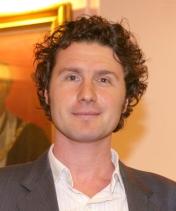Amazing Statistics
The expression “mind-boggling” seems most appropriate here.
After reading my book, “The Ascent of Science“, referred to yesterday, I gathered together just a few of the randomly-miscellaneous statistics which most struck me. No doubt there are plenty more! PLEASE SEND ME YOUR MOST AMAZING NATURAL STATISTICS!
We are carbon-based creatures. EVERY SINGLE CARBON ATOM in our bodies
was created in a supernova explosion of a giant star. We are truly “Children of the Stars”.
The “Nature” of our world and existence is indeed almost unbelievable.
 MOLECULES: They are extremely small: a teaspoonful of water contains about 200,000,000,000,000,000,000,000 molecules. If everyone on the planet set out to count these molecules one per second it would take over ONE MILLION YEARS.
MOLECULES: They are extremely small: a teaspoonful of water contains about 200,000,000,000,000,000,000,000 molecules. If everyone on the planet set out to count these molecules one per second it would take over ONE MILLION YEARS.
- A molecule of hydrogen in a steel cylinder travels at about 3,800 mph.
- Molecules NEVER stop moving. A molecule in the air makes 6,000 MILLION collisions with other molecules PER SECOND.
- The above two facts explain why the progress of molecules through space is extremely slow unless assisted by an external force (e.g. the wind)
- Every second, your skin is subject to bombardment by 2*10 to the power 24 (200,000,000,000,000,000,000,000,000) blows from molecules in the air.
ELECTRONS: When you switch on a light bulb, approximately 3*10 to the power 19 (30 million million million) electrons flow through your lamp EVERY SECOND
THE ATOM

- A man is about 10 BILLION times larger than an oxygen atom. If an atom were the size of a golf ball then a man would stretch from earth to the moon.
- A teaspoonful of solid nuclei of atoms would weigh about 500 million tons.
- The nucleus of a typical atom contains about 99.8% of the total mass of the atom.
- The diameter of an atom is about 100,000 times the diameter of the central nucleus.
- Most of an atom is empty space. Imagine a sphere of FIVE MILES to represent an atom. The nucleus on the same scale would be the size of a tennis ball.
- Most of your body is empty space …..
- A black hole is supposed to consist entirely of material from the nucleus; all the “empty space” has been stripped away. A black hole of the mass of the earth would be ONE CENTIMETER in diameter.
COLLAPSED STARS
- There is believed to be a black hole at the centre of our galaxy with the mass of ONE MILLION times that of our Sun.
- A pulsar or neutron star is a collapsed star that spins on its axis up to three or four thousand times per second.
- A pulsar is ONE HUNDRED TIMES DENSER than a white dwarf, which is what our Sun will become once its nuclear fuel has been used up.
- Pulsars sometimes send out gigantic amounts of visible light, equivalent to many times the total light emitted by the Milky Way.
- A tablespoon of material from a neutron star would weigh about 3 BILLION TONS.
THE HUMAN EAR
- can distinguish around 400,000 different sounds.
- can detect sounds so quiet that the vibratory movement induced in the eardrum is not much more than the width of a calcium atom.
By Chris Snuggs





